Resident Evil, known as Biohazard in Japan, is a Japanese horror game series and media franchise created by Capcom. It consists of survival horror, third-person shooter and first-person shooter games, with players typically surviving in environments inhabited by zombies and other frightening creatures. The franchise has expanded into other media, including a live-action film series, animated films, television series, comic books, novels, audiobooks, and merchandise. Resident Evil is the highest-grossing horror franchise.

A skeleton is a type of physically manifested undead often found in fantasy, gothic, and horror fiction, as well as mythology, folklore, and various kinds of art. Most are human skeletons, but they can also be from any creature or race found on Earth or in the fantasy world.

The House of the Dead is a 1997 horror-themed light gun shooter arcade game developed by Sega AM1 and released by Sega. It is the first game in the House of the Dead series. Players assume the role of agents Thomas Rogan and "G" as they combat an army of undead experiments created by Dr. Curien, a mad scientist.
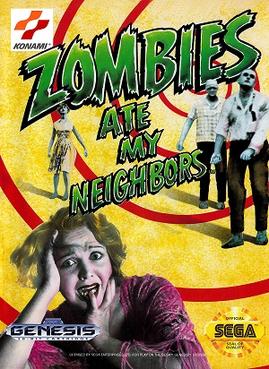
Zombies Ate My Neighbors is a run and gun video game developed by LucasArts and published by Konami for the Super NES and Sega Genesis consoles in 1993.

Nocturne is a 1999 action-adventure survival horror video game set in the late 1920s and early 1930s – the Prohibition and Great Depression era. The player takes the part of The Stranger, an operative of a fictional American Government secret organization known as "Spookhouse", which was created by President Theodore Roosevelt to fight monsters. He investigates four strange cases and saves people from classic monsters such as werewolves, zombies, and vampires.

Doom 3: Resurrection of Evil is a survival horror first-person shooter video game developed by Nerve Software and published by Activision. It was released for Microsoft Windows worldwide on April 4, 2005, as an expansion pack and sequel to Doom 3 and on October 5, 2005, for the Xbox video game console. The Xbox version does not require the original Doom 3 in order to play, and includes The Ultimate Doom, Doom II: Hell on Earth and Master Levels for Doom II. A remastered version of Resurrection of Evil was included with Doom 3: BFG Edition.

Ravenholm is a fictional ghost town in the first-person shooter game Half-Life 2, developed by Valve Corporation and released in 2004. It serves as the primary setting for the game's sixth chapter, "We Don't Go to Ravenholm", which follows the game's protagonist Gordon Freeman as he journeys through the area after escaping from a Combine attack on Black Mesa East in order to reach a nearby Resistance outpost. Ravenholm is a mining town in Eastern Europe which was destroyed by a Combine headcrab bombardment that turned its residents into hostile zombies. The town's sole survivor, Father Grigori, offers his assistance to Freeman throughout the level, culminating in a last stand at the town cemetery.
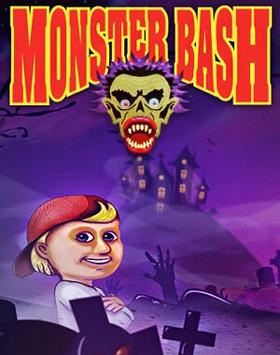
Monster Bash is a side-scrolling platform game developed and published by Apogee Software on 9 April 1993 for DOS. The game features 16-color EGA graphics and IMF AdLib compatible music. It was developed by Frank Maddin and Gerald Lindsly.

The Simpsons: Night of the Living Treehouse of Horror is a platform game published by THQ on March 19, 2001, for the Game Boy Color. Developed by Software Creations, it is based on the Treehouse of Horror episodes of the animated television series The Simpsons. The game features seven side-scrolling levels in which the player controls the members of the Simpson family. Night of the Living Treehouse of Horror has received average reviews from critics, with praise directed at the design.

Countdown Vampires is a survival horror game for the PlayStation developed by K2 LLC and published by Bandai.
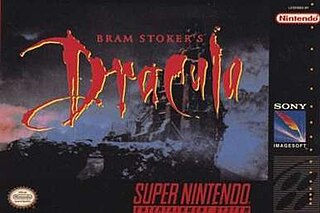
Bram Stoker's Dracula is a 1993 video game released for the Mega Drive/Genesis, Nintendo Entertainment System, Super NES, Game Boy, Master System, Sega CD, Game Gear, MS-DOS, and Amiga. It is based on the 1992 film Bram Stoker's Dracula which in turn is based on the 1897 novel Dracula by Bram Stoker. Most versions are platform games. The Sega CD and Amiga releases are beat 'em ups, and the MS-DOS version is a first-person shooter. The Amiga version was released in 1994 for North America and Europe. A CD-ROM version for MS-DOS compatible operating systems was released in 1995.

Crypt of Medea is an adventure game written by Arthur Britto and Allan Lamb for the Apple II. It was published by Sir-Tech in 1984. Crypt of Medea makes use of graphics, but is controlled via text commands. The game begins with the player trapped inside Medea's crypt, and the goal is to find a way out. The player must make use of a variety of items and avoid falling victim to enemies and traps.
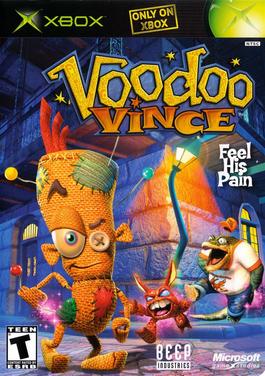
Voodoo Vince is a 2003 platform video game developed by American developer Beep Industries and published by Microsoft Game Studios for the Xbox. Unlike other Xbox games, however, this game is not compatible with the Xbox 360. It was released in North America on September 23, 2003, in Europe on October 17, 2003, and in Japan on July 22, 2004. A remastered version for Microsoft Windows and Xbox One was released by Beep Games under license from Microsoft on April 18, 2017.
Secrets of the Cryptkeeper's Haunted House is a children's Saturday-morning game show that ran on CBS. It premiered on September 14, 1996, and lasted until August 23, 1997. It featured the Cryptkeeper of Tales from the Crypt now serving as an announcer. It is the last TV series in the Tales From the Crypt franchise. The series was taped at Universal Studios Florida.
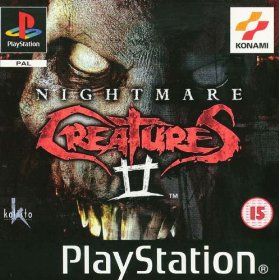
Nightmare Creatures II is a survival horror video game developed by Kalisto Entertainment and published by Konami for the PlayStation and Dreamcast. It is the sequel to Nightmare Creatures.

Nosferatu (ノスフェラトゥ) is a horror-themed action platform game developed and published by SETA Corporation for the Super Nintendo Entertainment System. It was released in Japan on October 7, 1994, and in North America in October 1995.

Red Dead Redemption: Undead Nightmare is a 2010 action-adventure game developed by Rockstar San Diego and published by Rockstar Games. A standalone expansion pack to the 2010 open world Western game Red Dead Redemption, it adds a non-canonical zombie horror–themed single-player campaign, two multiplayer modes, and cosmetic additions to the environments and characters. Set in an alternate timeline from the base game's story, the plot follows returning protagonist John Marston, a former outlaw who sets out to find the cause of and possible cure for a zombie plague that has infected his wife and son. Marston liberates towns overrun by the undead and assists non-playable characters with side quests along the way.

Mummies are commonly featured in horror genres as undead creatures wrapped in bandages. Similar undead include skeletons and zombies.
A horror game is a video game genre centered on horror fiction and typically designed to scare the player. The term may also be used to describe tabletop games with horror fiction elements.
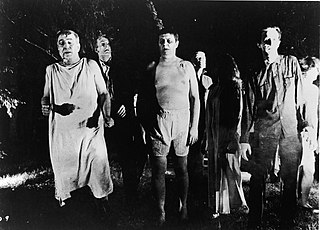
Zombies are recurring antagonists within the fictional universe of Japanese video game company Capcom's multimedia franchise Resident Evil, known in Japan as Biohazard. First appearing in the 1996 video game Resident Evil, they are mutated creatures with cannibalistic urges and severe epidermal necrosis, and their origins are explained from a scientific perspective. In contrast to zombies in other horror and fantasy genre works where they are traditionally presented as corporeal revenants with mythological and supernatural origins, zombies in the Resident Evil series are usually created through the use of biological weaponry, genetic manipulation and/or parasitic symbiosis. Subsequent sequels have featured other types of zombies as well as related creatures which are presented as more agile, vicious, and intelligent opponents.
















